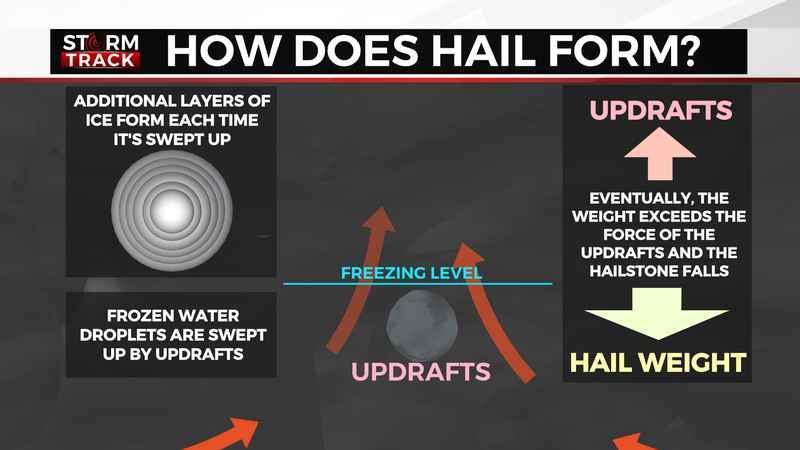Weatherz School: Hail

With the potential to be both costly and dangerous, hail can be a formidable phenomenon. Let’s dive into the cause of these destructive balls of ice that fall from the sky.
The driving force is the thunderstorm’s updraft. Hail begins with frozen water droplets being swept up by the updraft. The hailstone grows as it collides with liquid water droplets that freeze onto it. This causes layers of ice to form as the hailstone is tossed around the inside of the thunderstorm. Eventually, the weight exceeds the force of the updraft and the hailstone falls.
The stronger the updraft, the larger the hail. That’s why the occurrence of different hail sizes decreases the larger the hailstone becomes. Small hail is the most common, and giant hail, larger than a baseball, is exceptionally rare. Grapefruit sized hail requires an updraft speed of 103 mph! The larger the hail, the greater the potential for damage. Severe criteria begins at quarter-sized hail.
Hail can melt on its way down, shrinking in size or turning to rain. Higher elevation areas are closer to the freezing level, so hail is more likely to make it to the surface along the high terrain of the North Shore than along the shoreline of Lake Superior.